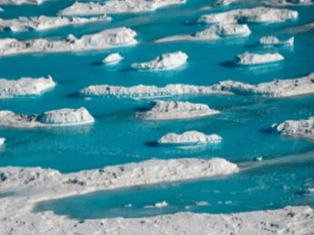Sep 27 2019
Durham University scientists have recently discovered over 65,000 meltwater lakes on the edge of the East Antarctic Ice Sheet.
 Meltwater on the ice shelf next to McMurdo Station. (Image Credit: Nicholas Bayou, UNAVCO)
Meltwater on the ice shelf next to McMurdo Station. (Image Credit: Nicholas Bayou, UNAVCO)
The number of these lakes, spotted using high-resolution satellite images, is more noteworthy than formerly thought. The satellite images captured five million square kilometers of the ice sheet—the largest ice mass in the world.
Warming Climate
The study reveals that meltwater lakes are forming in a majority of the coastal areas of the ice sheet, indicating that certain regions could be more sensitive to the impacts of a warming climate than formerly thought.
Scientists analyzed satellite images captured during the summer melt season of the East Antarctic Ice Sheet in January 2017 when meltwater lakes usually form.
The images revealed that lakes frequently clustered merely a few kilometers from where the ice sheet starts to float on the sea. However, a few can occur hundreds of kilometers inland and at heights of up to 1000 m.
Ice Shelves
Nearly 60% of the lakes form on floating ice shelves, including some possibly on the verge collapse if the meltwater lakes become large enough to cause cracking and drain through the ice.
Several of the lakes were of the size of a regular swimming pool, while the largest measured more than 70 km2.
Greenland Ice Sheet
The density of lakes in certain regions of East Antarctica is comparable to those on the Greenland Ice Sheet and on the Antarctic Peninsula—areas which are normally considered to be a lot warmer.
The study outcomes enable scientists to identify where lakes are forming in high numbers because of surface melting and which areas of the East Antarctic Ice Sheet might be most susceptible to climate change.